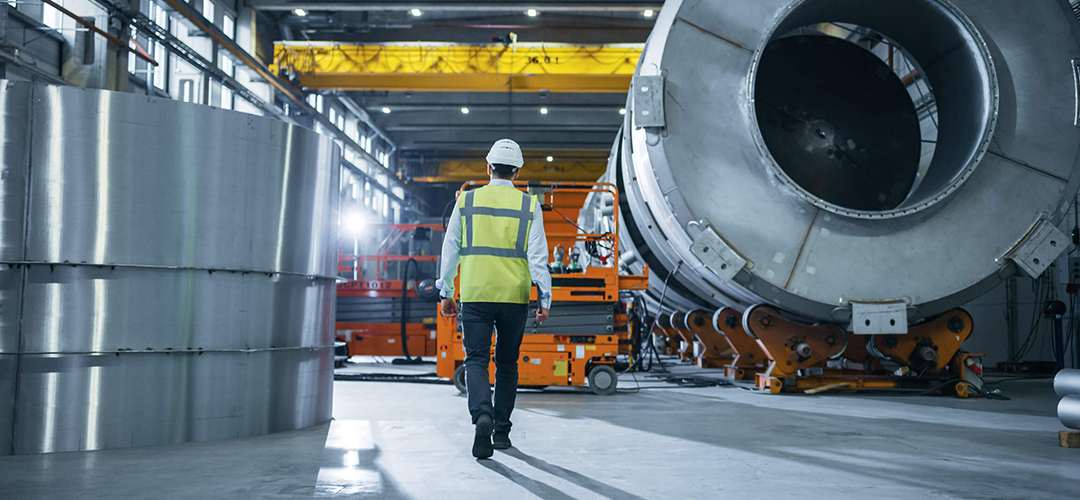In today’s world, sustainability and environmental responsibility are increasingly important across all industries, and engineers play a critical role in shaping solutions to these challenges.
One of the most valuable tools engineers can use to evaluate and minimize the environmental impact of their projects is Life Cycle Assessment (LCA).
This method provides a holistic view of the environmental impacts associated with a product or process throughout its entire life cycle, from raw material extraction to disposal or recycling.
In this blog post, we will explore what Life Cycle Assessment is and why it is extremely important for engineers.
What is Life Cycle Assessment (LCA)
Life Cycle Assessment is a methodology used to assess the environmental impacts of a product, process, or system throughout its entire life cycle.
The goal of LCA is to evaluate and minimize the negative effects on the environment by considering the resource use, emissions, and waste produced at each stage, from production to disposal.
Life Cycle Assessment typically involves four main actions:
Define foal and scope
The first stage involves defining the purpose of the study, the system boundaries, and the functional unit (the unit of measurement for the product or service). For engineers, this step helps identify the areas of the product or process that are most critical to assess.
Run Life Cycle Inventory (LCI)
The second stage involves gathering data on the resources used and emissions produced throughout the life cycle. Engineers collect data on materials, energy inputs, emissions, and waste generated at each stage of production and use.
Run Life Cycle Impact Assessment (LCIA)
After gathering the necessary data, engineers assess the potential environmental impacts of the product or process. Impact categories include global warming potential (GWP), acidification potential, eutrophication, human toxicity, and more. This phase helps identify the most significant environmental impacts.
Interpret the results
In the final stage, engineers analyze the results, identify improvement opportunities, and make recommendations for reducing the product’s environmental footprint. This stage also involves communicating findings to stakeholders and decision-makers.
Why Life Cycle Assessment for Engineers
As engineers, the ability to design and implement sustainable systems is a growing responsibility. Environmental concerns, regulatory pressures, and consumer demand for greener solutions have made sustainability a critical focus across industries.
Life Cycle Assessment helps engineers make informed decisions about the environmental consequences of their designs and processes.
Here are several key reasons why LCA is crucial for engineers:
Making informed decisions
Life Cycle Assessment provides engineers with data-driven insights into the environmental impacts of different design choices, materials, and processes. This information empowers engineers to select the most sustainable solutions while considering trade-offs between performance, cost, and environmental impact.
Tackling environmental responsibility
Life Cycle Assessment allows engineers to evaluate the sustainability of their designs and processes. It helps identify opportunities to reduce waste, energy consumption, and emissions, contributing to a cleaner, more sustainable future.
Meeting regulatory compliance
With environmental regulations becoming more stringent, engineers must ensure that their designs comply with industry standards and government regulations. Life Cycle Assessment provides the necessary data to support compliance with sustainability standards, such as the ISO 14040 and ISO 14044 standards for environmental management.
Getting competitive advantage
Companies that integrate Life Cycle Assessment into their design processes can demonstrate their commitment to sustainability, giving them a competitive edge in the marketplace. Consumers are increasingly prioritizing environmentally friendly products, and businesses that embrace sustainability can build strong brand loyalty.
Providing cost savings
Though Life Cycle Assessment can be resource-intensive, it often leads to cost savings in the long run. By identifying areas where resources are being wasted or emissions are unnecessarily high, engineers can optimize designs and processes to save money while reducing their environmental footprint.
How to apply Life Cycle Assessment in Engineering
Life Cycle Assessment can be applied across various fields of engineering, from mechanical and civil engineering to chemical and environmental engineering.
Following a few examples of how LCA is used in different engineering disciplines:
Chemical Engineering
Chemical engineers can use Life Cycle Assessment to assess the environmental performance of chemical processes, including those in manufacturing, food production, and energy generation.
By analyzing resource use and emissions at each stage of a chemical process, engineers can identify opportunities for reducing energy consumption, improving efficiency, and minimizing waste.
LCA can also be used to compare alternative chemical processes, helping engineers select the most sustainable option.
Mechanical Engineering
Mechanical engineers can apply Life Cycle Assessment to evaluate the environmental impacts of products such as vehicles, machinery, and equipment.
For example, when designing a car, an engineer can use LCA to compare the environmental impacts of different materials (e.g., steel versus aluminum) or energy sources (e.g., gasoline versus electricity).
The goal is to identify design options that minimize the carbon footprint and other environmental impacts, such as resource depletion and pollution.
Civil Engineering
In civil engineering, Life Cycle Assessment is crucial for assessing the sustainability of infrastructure projects.
Engineers can evaluate the environmental impact of construction materials, such as concrete, steel, and asphalt, and select those with the lowest environmental footprint.
LCA can also be applied to the life cycle of buildings, bridges, and roads, helping engineers make informed decisions about energy-efficient designs, waste management, and material sourcing.
Environmental Engineering
Environmental engineers are responsible for assessing and mitigating the environmental impact of industrial activities.
Life Cycle Assessment plays a key role in evaluating pollution control technologies, waste management practices, and the overall environmental impact of industrial systems.
By using LCA, environmental engineers can design systems that reduce waste, recycle resources, and minimize pollution, contributing to sustainable development.
What are the tools for Life Cycle Assessment for Engineers
Several tools and software packages are available to help engineers perform Life Cycle Assessments efficiently. These tools facilitate the data collection and impact analysis processes, making it easier to conduct LCA studies.
Some of the most popular LCA software tools include:
P6 Technologies
P6 Technologies is the leading LCA software paving the path to improving products through easy, and verifiable product-level life cycle assessments (LCA) of biogas, transportation fuels, and chemicals.
Equipped with custom functionalities and pre-built LCA templates for all types of industries, this is an intuitive platform that will help all engineers to automate key tasks, reduce complexity, and perform LCAs in just a couple of steps.
- LCA Templates: Pre-built templates to rapidly create LCAs, ensuring quicker results without compromising accuracy
- Regulatory Compliance: LCAs for regulatory pathways, including California LCFS, Washington CFS, Oregon CFP, and Canada CFR
- Forecasting & Insights: Deeper insights into how your operations impact CI scores while effortlessly generating forecasts across facilities
- CI Level Monitoring: Tracking and assessing the carbon intensity at the product level to optimize environmental impact
SimaPro
SimaPro is one of the most used LCA software programs by engineers, providing a comprehensive set of tools for analyzing environmental impacts and creating detailed reports. It includes a large database of materials and processes to facilitate the assessment.
OpenLCA
OpenLCA is an open-source LCA software that allows engineers to model, analyze, and interpret environmental data. It supports a variety of databases and impact assessment methods, making it a versatile tool for LCA studies.
Umberto
Umberto is a software tool designed for material flow analysis (MFA) and LCA. It is particularly useful for engineers working in industries such as manufacturing and energy.
Life Cycle Assessment (LCA) is an essential tool for engineers who are committed to designing sustainable products and systems.
By evaluating the environmental impacts of a product or process from start to finish, engineers can identify opportunities for improvement and make data-driven decisions that reduce waste, energy consumption, and emissions.
With the growing demand for sustainable solutions and increasing regulatory pressures, LCA will continue to be an invaluable tool for engineers working to create a more sustainable and environmentally responsible future.
Either when designing a new facility or even making changes to an existing one, the resulting carbon intensity is needed as part of the design or change. That is where the P6 platform comes in, making it simple to perform a Life Cycle Assessment for engineers.
Curious to learn more about the P6 platform? Book your demo now and find out how P6 can transform the way you approach Life Cycle Assessments.





